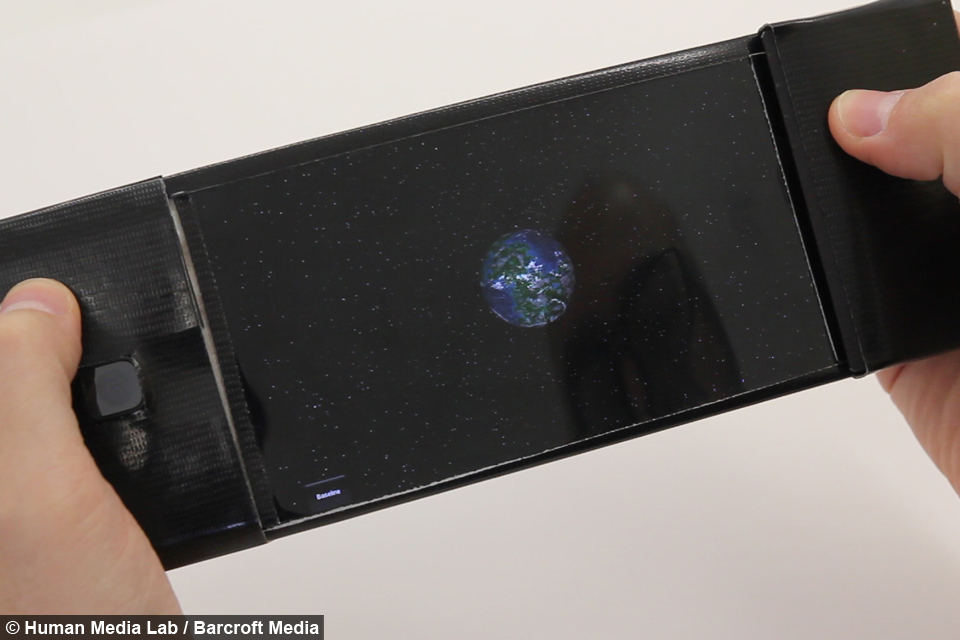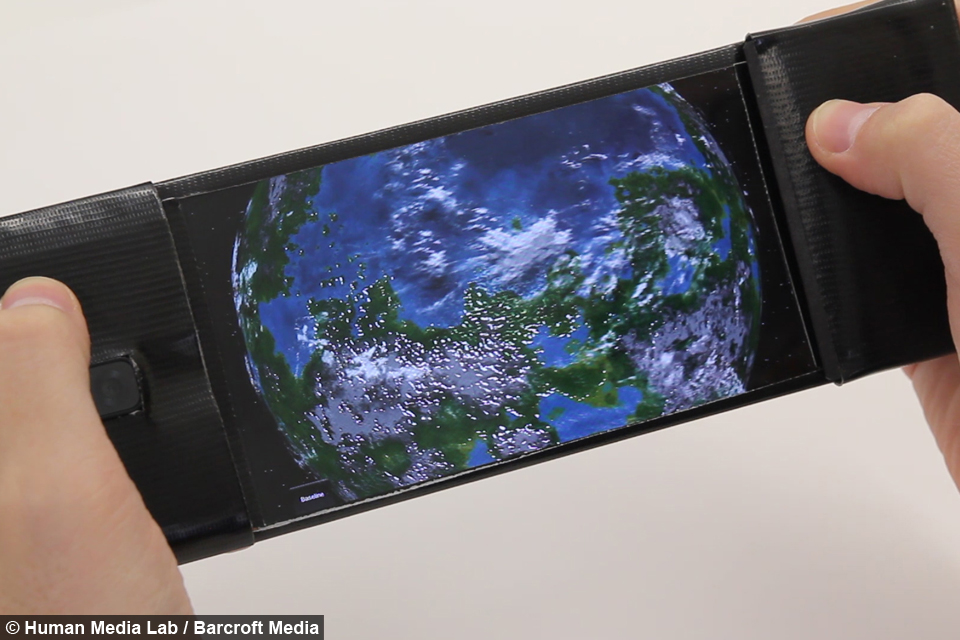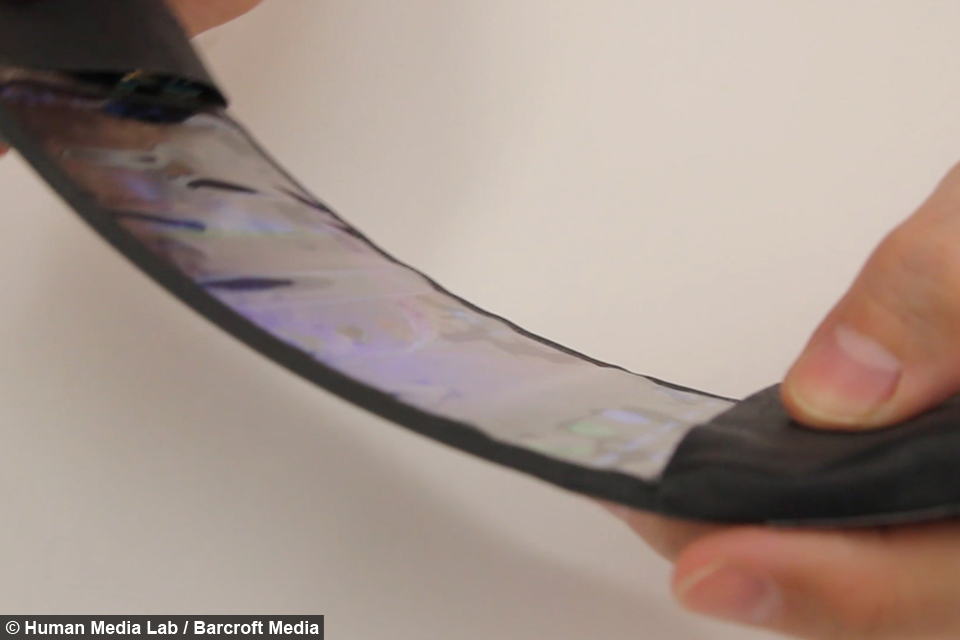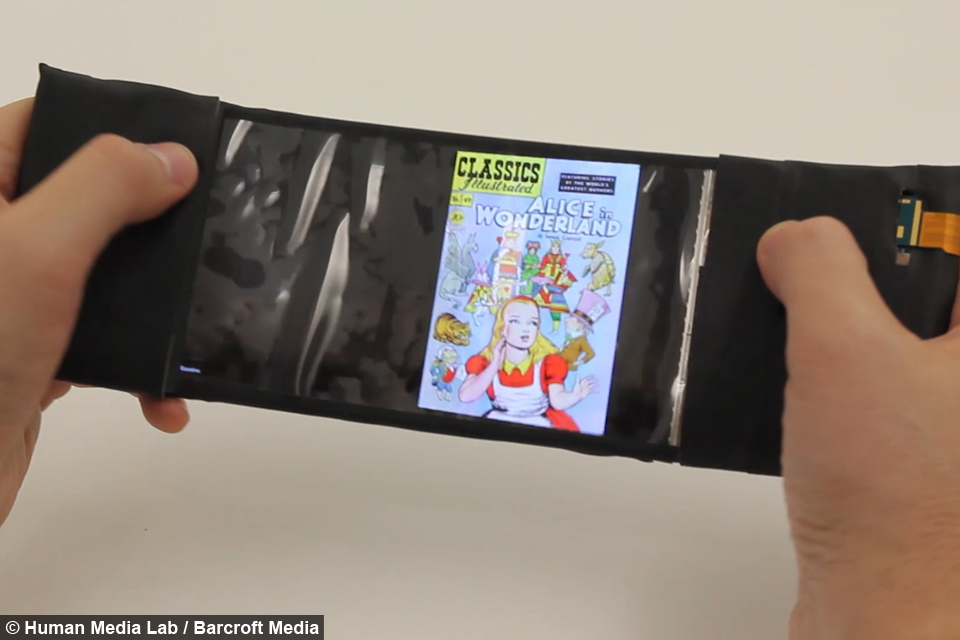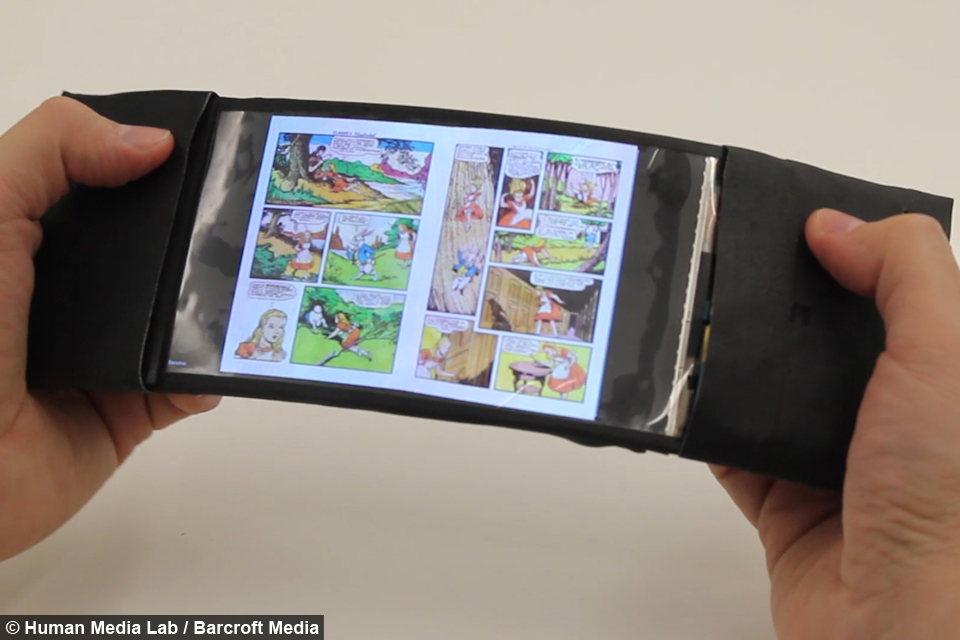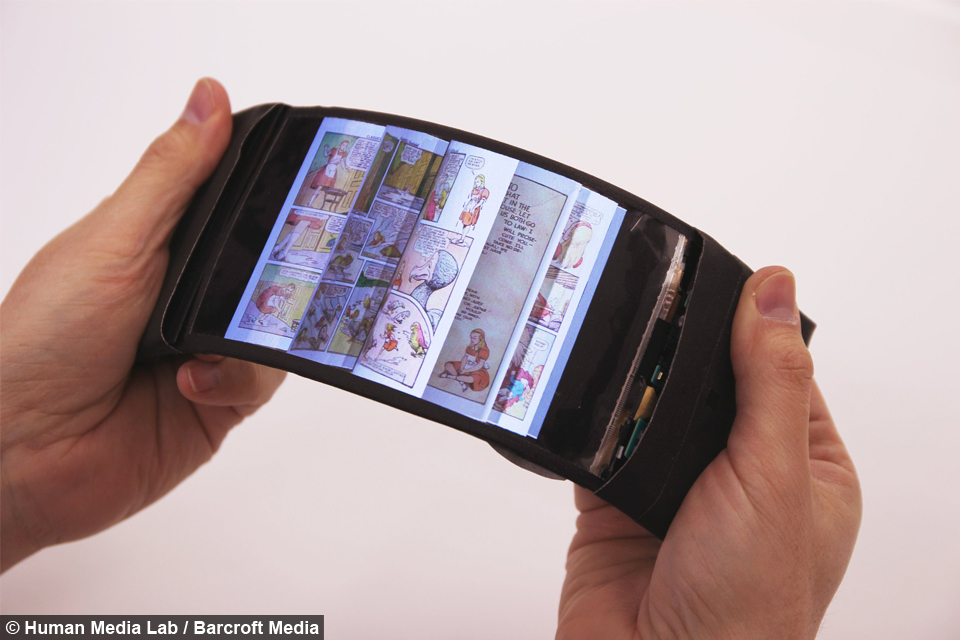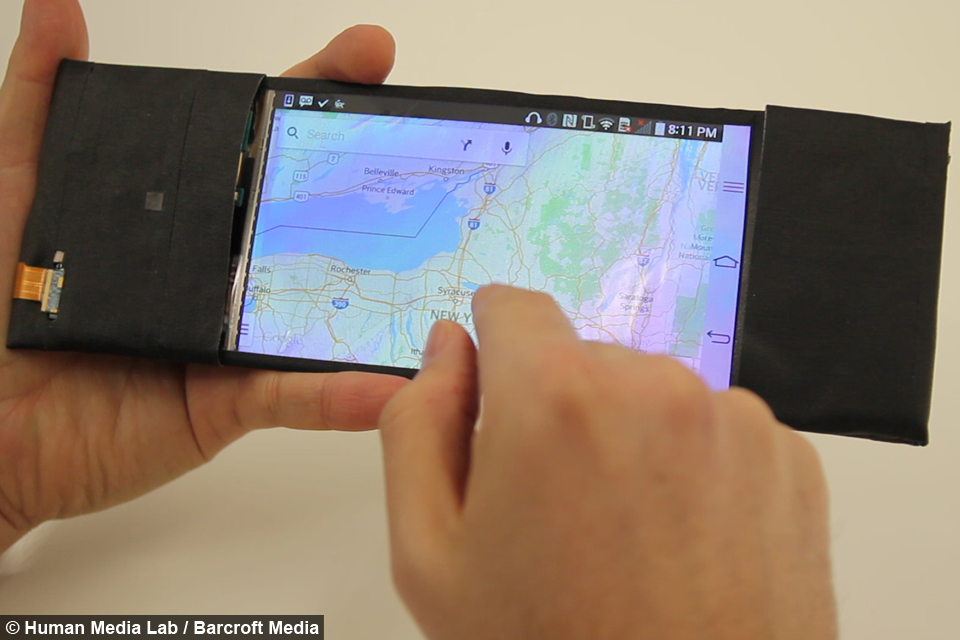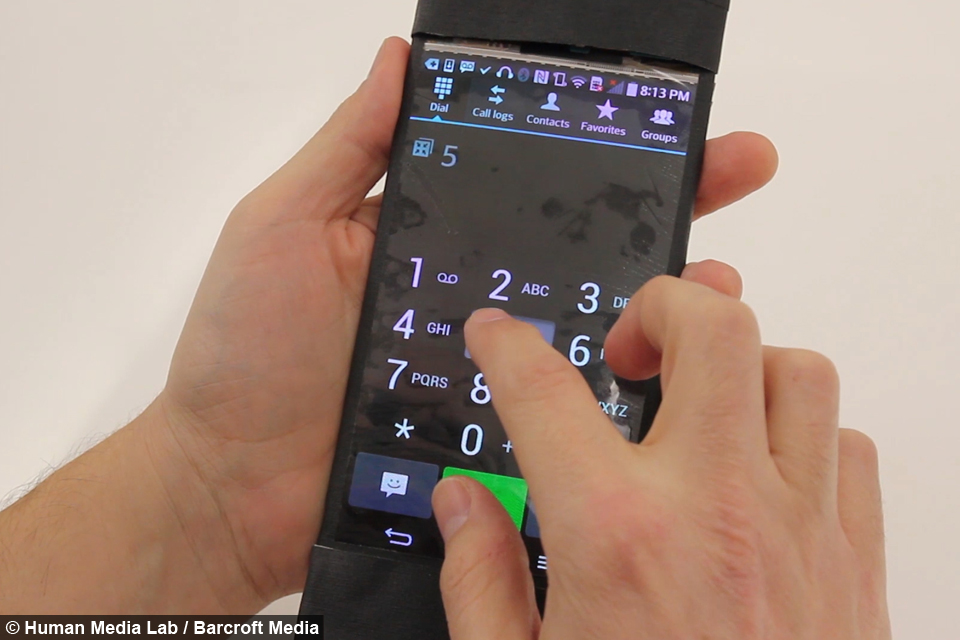Bend it Like...The World's First Flexible Smartphone
By Nathalie Bonney
Scroll down for the full story
The world’s first flexible smartphone ReFlex is as little as five years away from becoming a high street reality say its makers.
Currently in development at Queen’s University’s Human Media lab in Kingston, Canada, the first prototype was recently unveiled to industry experts at a conference in Eindhoven, The Netherlands.
Calling it ‘revolutionary’, Queen University’s school of computing director Roel Vertegaal says the ReFlex will change how we use our smartphones in the future and make the current ‘rigid’ smartphones seem out of date.
"This represents a completely new way of physical interaction with flexible smartphones", said Vertegaal.
"The iPhone is eight years old now and it’s time for a change. Given the interest we’ve seen in this prototype and that it’s almost market-ready we believe that it’s going to change things very shortly.’
Thanks to an ultra thin film screen, users will be able to bend the smartphone just as they would a book or piece of paper.
Clever 'bend sensor' technology will make smartphone use easier: reading and browsing lengthy books and documents will be quicker and simulated actions on games and apps will feel more intuitive as users bend the phone to manipulate what’s happening on-screen.
"When this smartphone is bent down on the right, pages flip through the fingers from right to left, just like they would in a book," Vertegaal added.
More extreme bends speed up the page turns and vibrations from the phone replicate the sensation of the pages being turned through the users’ fingertips.
‘This allows eye-free navigation, making it easier for users to keep track of where they are in a document, ’ explains Vertegaal.
Able to detect the level of force used by the smartphone owner, the bend sensors also enable phone users playing games to experience a more realistic simulation of physical forces.
Confused? Allow Angry Birds to enlighten.
"We can simulate the feeling of a rubber band through vibrations in the phone which makes it a really neat experience. So you can really accurately judge when to let that bird fly,” said Vertegaal.
ReFlex also features a touch screen powered by Android 4.4 ’KitKat’, a camera, battery and voice coil, adding to user’s tactile experience.
Vertegaal explained: "Voice coil is a speaker that produces very low frequency sounds with which we can make very precise vibrations within the phone - these are not the kind of vibrations you get when you put your phone on silent but very precise vibrations.”
The Queen’s University team say it’s taken them 12 years to get to this stage.
Vertegaal said: "In 2004 we put out a project called paper windows where we simulated the use of flexible displays by projecting on pieces of paper.”
By monitoring the shape, location and orientation on the paper the team hoped they could eventually simulate this experience of a paper computer into a real-life flexible smartphone.
In 2011 they launched PaperPhone, the world’s first flexible smartphone; however it was still tethered to a computer.
Vertegaal, a professor of human computer interaction, calls the ReFlex ‘the first wireless full colour, full-motion, high-res flexible smartphone.’
He said there has already been interest but couldn't give more details. “Watch this space,” he said.
